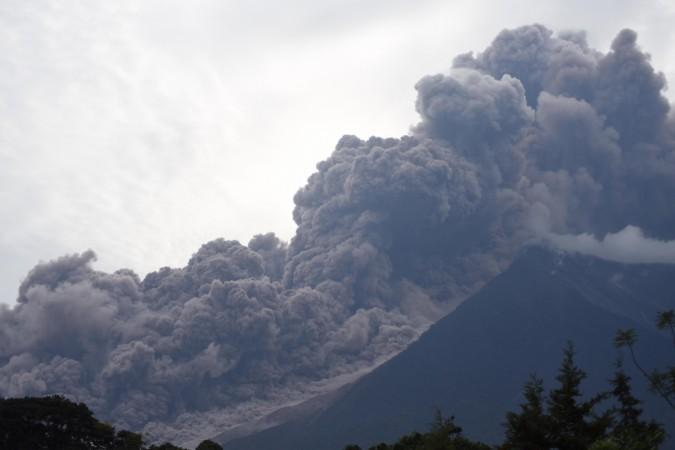Guatemala's Fuego volcano erupted on Sunday, June 3, for the second time in 2018 killing at least seven people and injuring about 300. Sunday's eruption is said to be the most violent one in the last 40 years.
Volcan de Fuego, which means the "Volcano of Fire" spewed columns of ash and smoke and also sent out an eight-kilometre of red-hot lava down the mountainsides. The National Disaster Management Agency (Conred) revealed that a river of lava entered the village of El Rodeo, burning down houses and charring people to death.
"It's a river of lava that overflowed its banks and affected the El Rodeo village. There are injured, burned and dead people," Reuters quoted Sergio Cabanas, the general secretary of Guatemala's CONRED national disaster management agency, as saying.

"We have 7 confirmed dead, 4 adults and 3 kids, who were already taken to the morgue," added Mario Cruz, spokesman for the volunteer firefighter corps. He also said that an alert had been sounded in the area and 3,100 people have been evacuated until now.

The massive eruption forced Guatemala City's La Aurora international airport to shut down its runway and the popular La Reunion golf club near Antigua has also been evacuated.

"Temperatures in the pyroclastic flow can exceed 700 degrees (Celsius) and volcanic ash can rain down on a 15 kilometre (9.32 miles) radius. That could cause more mudflows and nearby rivers to burst their banks," the agency quoted Eddy Sanchez, director of Guatemala's seismological, volcanic and meteorological institute, as saying.
About 1.7 million people have been affected by the Guatemala volcano eruption and rescue and evacuation operations are on in full swing. Residents have been advised to wear masks and the air in the region is filled with smoke and ash from the explosion.

Volcan de Fuego
Volcan de Fuego, an active stratovolcano in Guatemala, is about 16 kilometres west of Antigua, which is a popular tourist destination. The volcano is known to be constantly active on a smaller level and has seen few larger eruptions.
Small gas and ash eruptions are seen on the mountain every 15 to 20 minutes, and a large eruption was last witnessed on August 9, 2017.
Meanwhile, terrifying images and videos of the Guatemala volcano's eruption have appeared on social media and thick smoke and ash can be seen over the crater. Authorities now believe that the death toll may rise.
#BREAKING VIDEO: MULTI REPTS OF FATALITIES (uc) More To Come #Guatemala #Volcano (@meanlin1) pic.twitter.com/GuVQy0Y2YG
— Urgent News (@UrgentNews911) June 3, 2018
“It’s raining sand.” #Volcano #eruption #Guatemala pic.twitter.com/dmMTFmiyKU
— Kawasook (@kawasook) June 3, 2018
Volcán de Fuego y sus erupciones... pic.twitter.com/6T9TxQ6hOo
— Guía espiritual. (@renato_lechuga) June 3, 2018

















